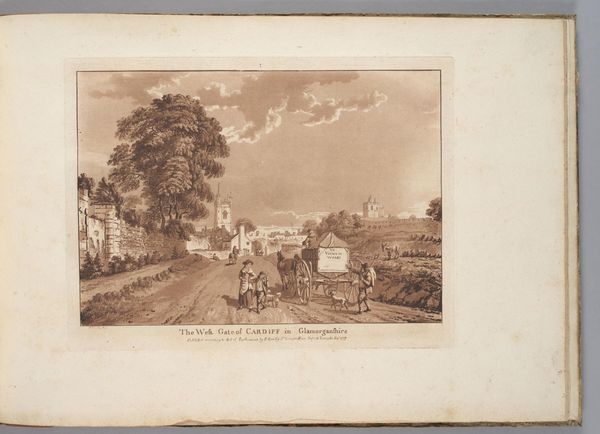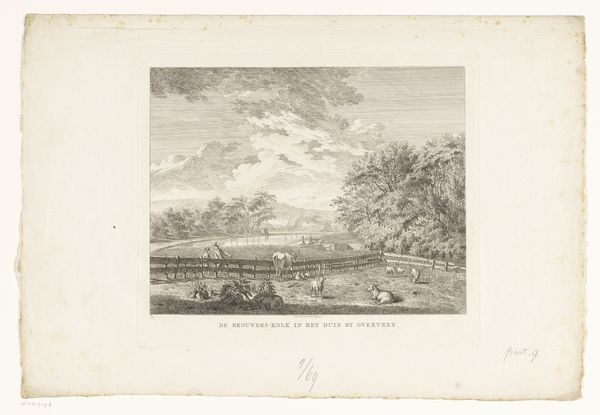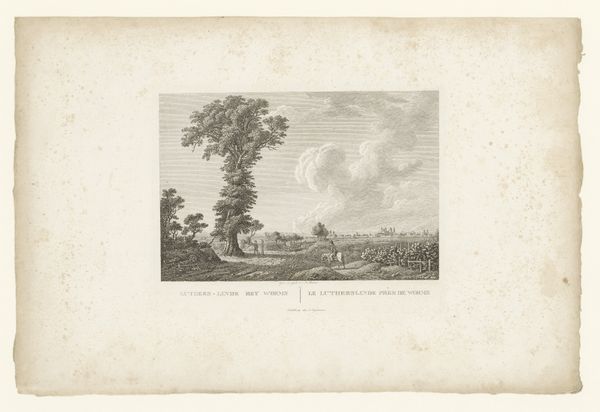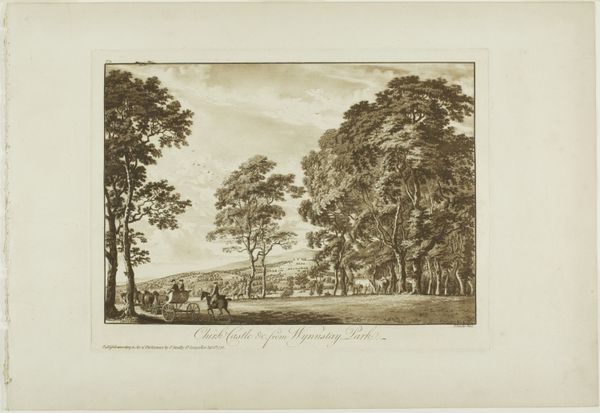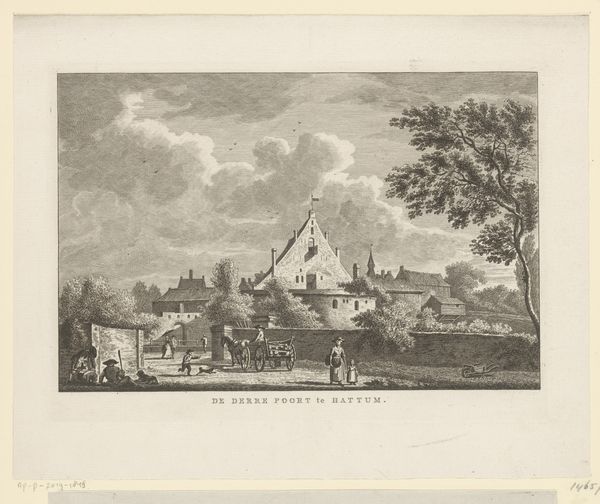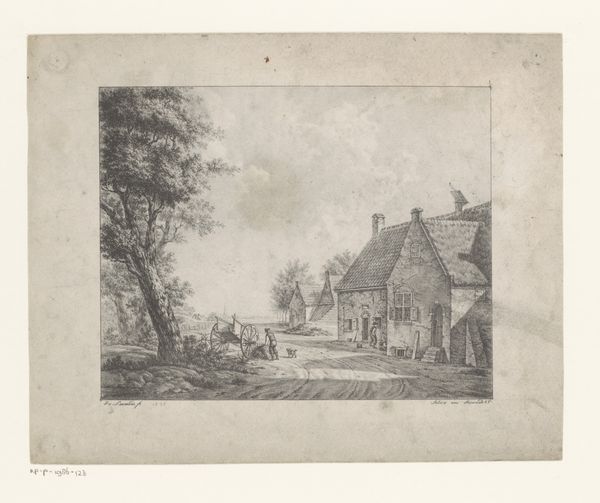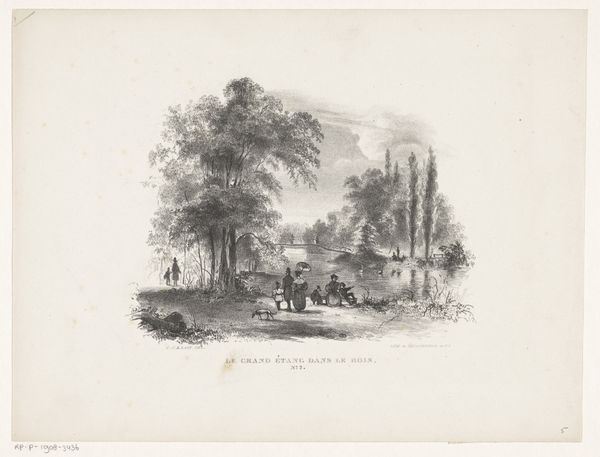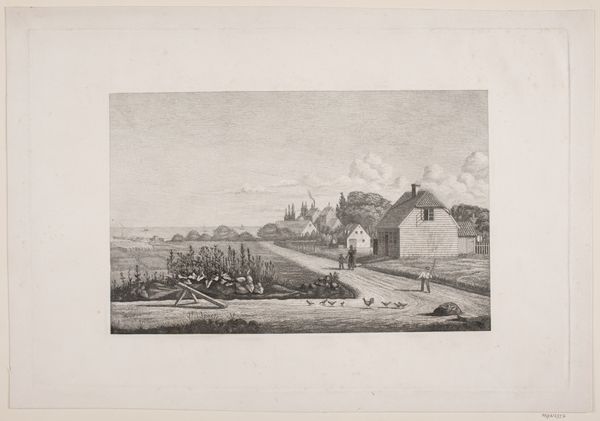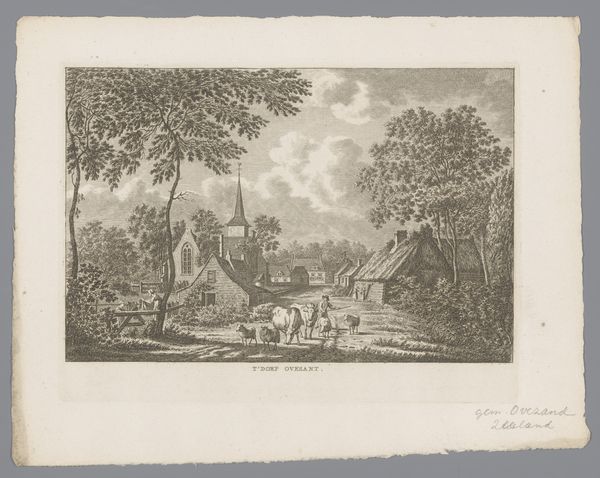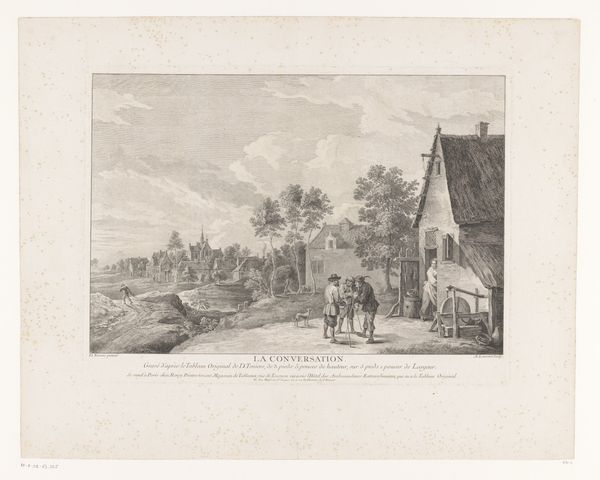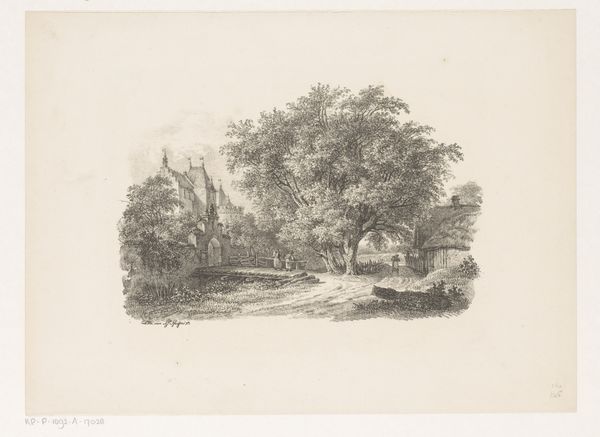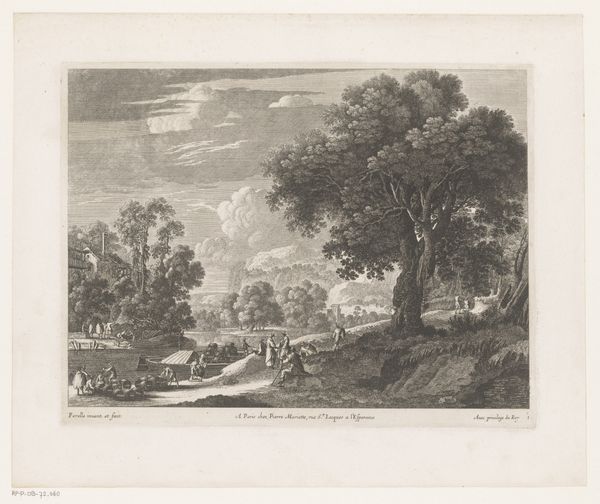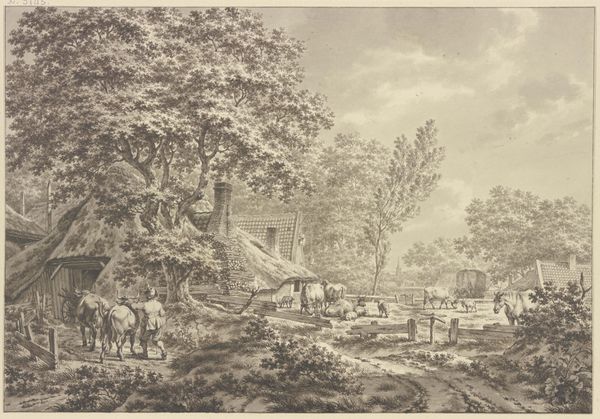
drawing, print, etching, paper
#
drawing
# print
#
etching
#
landscape
#
paper
#
cityscape
#
watercolour illustration
#
history-painting
Dimensions: 237 × 314 mm (plate); 320 × 463 mm (sheet)
Copyright: Public Domain
Curator: We’re looking at "The West Gate of Cardiff in Glamorganshire," a print made by Paul Sandby in 1776, using etching on paper. It’s currently held in the collection of The Art Institute of Chicago. Editor: My first impression? It's sepia-toned and seems to evoke a very particular moment, caught like a faded photograph. It has a real sense of calm and tranquility about it. Curator: That’s an astute observation. Sandby was known for documenting British landscapes and architecture. This print depicts a specific entry point to Cardiff, emphasizing the integration of town life and rural scenery. Note how Sandby chooses to represent the working figures centrally. The location of this image would have been along a key trading and cultural route in Wales, contributing significantly to civic pride, trade and prosperity, making it a central landmark within the Welsh economy. Editor: The gate itself is almost understated, a simple arch leading into the city. The horse and cart carry signage indicating trading and/or public transport. But my eye is drawn to the figures. To me, this gate feels more like a symbol of community and passage. People appear active on the move for daily commercial actions rather than some grand entrance. It invites consideration of the common person's experience rather than that of royalty and power of great rulers that so dominated much of that periods art production. Curator: I think you are right that Sandby is drawing attention away from the traditional forms of British power at the time, by drawing attention away from what might have historically symbolised Cardiff in its own right as a significant place in Wales and further highlighting the daily life in this specific geographic context. The social dimensions are indeed present but one has to note that images like these can carry political weight and further the agendas in how regions, settlements, economies and peoples get represented at national and international levels through this distribution method which at the time could prove contentious amongst the ruling classes in its own right. Editor: Absolutely. The inclusion of children playing and what may well be farmers bringing goods to the city, the dog frolicking by the front - all are figures so central and immediate to this depiction. So if we reflect further still, does this give Cardiff's west gate and wider community further symbolic depth still as a kind of ‘Everyman’ symbol, especially considering what could well be, at that specific moment, Cardiff as a city and urban place on the rise in the British psyche of placehood? Curator: A wonderfully thought provoking image of the West Gate of Cardiff. The nuances are not obvious at first viewing but the importance within social context reveals greater hidden political and sociological insight upon closer and critical inspection. Editor: I leave this feeling a little melancholic but strangely uplifted; pondering Cardiff as a potential hub and melting pot for cultural ideas on the rise in British history and how Sandby's creative genius provides a very human and empathetic interpretation of urban evolution through something seemingly unremarkable.
Comments
No comments
Be the first to comment and join the conversation on the ultimate creative platform.
